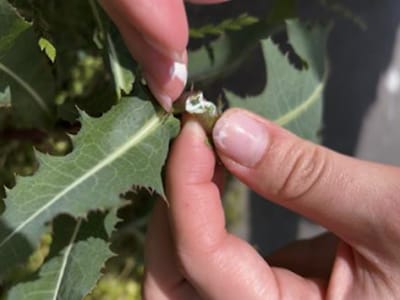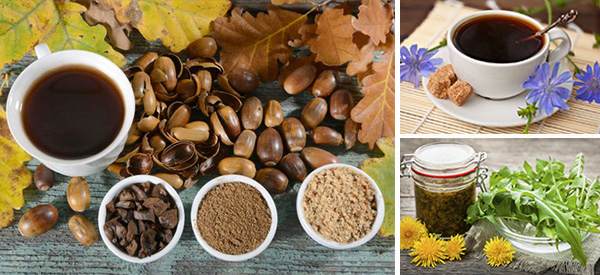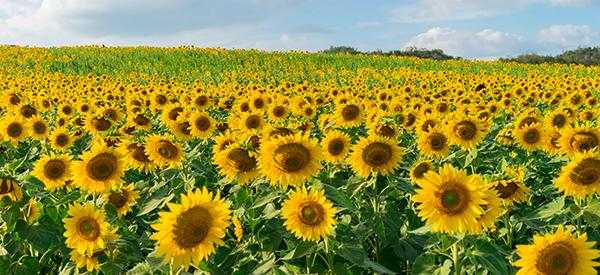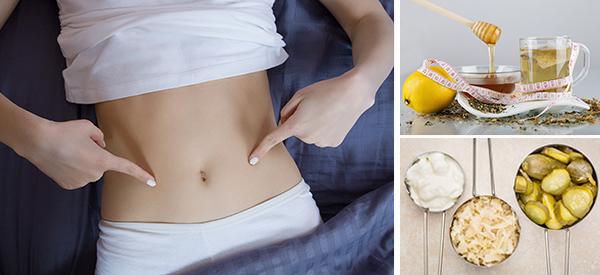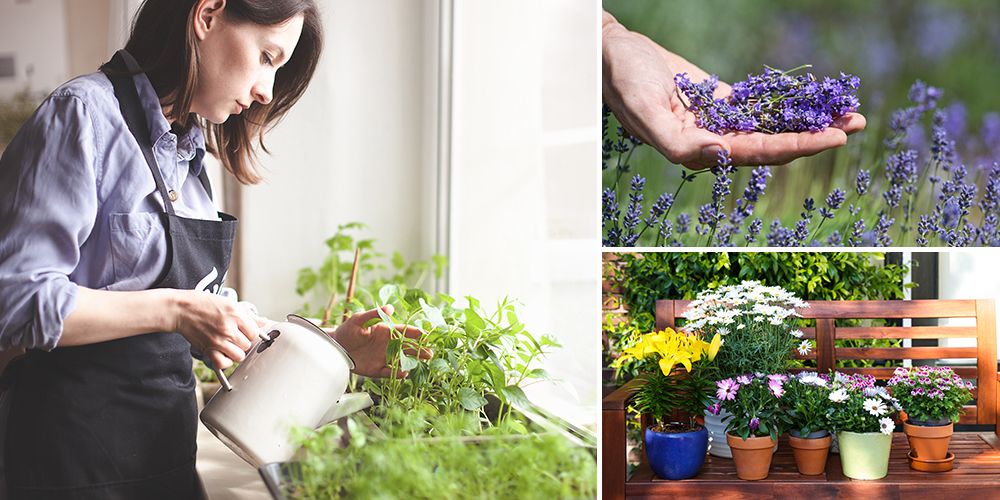
Grow Your Own Tea Garden
The only thing that can make a cozy cup of tea better is knowing that you grew the herbs in the cup yourself! But it can be intimidating to get started, and overwhelming considering the many varieties of herbs out there. We’re here to help—with a little time and some light research, you’ll be well on your way to the tea garden of your dreams. It’s guaranteed to make your next cup of tea that much better!
Preparing Your Tea Garden
The beauty of a tea garden is that you don’t need a ton of space, you can grow plants indoors or outdoors, and you can get your garden set up relatively quickly. Plan on starting your garden in the spring if you’re planting outside. If you’re planting pots or indoor containers, any time of the year is great, though it will be easier to find seeds and starts during the warmer months.
 For an outdoor garden, take the following steps:
For an outdoor garden, take the following steps:
- Find a spot for your pots or for your garden bed that gets at least half the day in the sun
- Prepare your garden beds with well-draining, organic, all-purpose soil
- For easy harvesting, plant your tallest herbs in the back of the plot and your shortest in the front
- Plants generally only need 6-8 inches between them
- Put your seeds in the ground about four weeks before the last frost
- If you’re using starts, put them in the ground after all threat of frost has passed
- Water regularly and consistently, but don’t overwater—most herbs don’t like their roots to be in standing water!
A container garden inside is even easier. Here’s what you’ll need to do:
- Find a warm spot near windows for your containers, or set up indoor grow lights over them
- Prepare your containers with well-draining, organic potting soil
- Plant your herbs with 4-6 inches between them
- Water regularly and consistently, but don’t overwater!
Once your plants are in the ground, regular weeding and fertilizing with organic supplements will go a long way to help them stay healthy and productive. Be aware that because you’ll be drinking tea from these plants, it’s not recommended to use pesticides!
Harvesting Your Herbs
Once you’ve planted your herbs and they’re bearing flowers, it’s time to reap the reward of your efforts! Here are some tips to help you get the most out of your tea garden:
- Harvest first thing in the morning, when the weather is still cool and the plants are moist
- Clip the full stem of a plant, so it’ll last longer until you’re ready to use them (then you can trim the flowers off)
- Dip the entire stalk into a tub of cold water to remove dirt and pests
- Keep plants in a glass of water for up to a week if you’re using fresh herbs
- To dry your herbs for winter, lay the flowers or leaves (trimmed from their stalks) in a single layer on a wide screen and place them in a dry, sunny location for about a week
- Store dried herbs in an airtight container for up to six months
With a little preparation, you’ll be able to enjoy your tea garden throughout the entire year!
What to Plant
Now it’s on to the fun part—deciding what to fill your tea garden with! Chances are good that you already know exactly what kind of tea you like. But if you’re wondering where to start, below are some of the most common and useful herbs to have on hand for home-brewed teas.

Lavender
Lavender, the lovely purple flowering stalk, is often known for its smell: a sweet, fresh floral scent that can make any tea garden a paradise. But it’s also delicious in a cup of tea itself!
Lavender is especially useful for people who are stressed or struggling with sleep. It can help relax the body and promote overall wellness. Use the tiny buds, or full stalks if you don’t want to de-flower them, of the plant fresh or dried.
⇒ The Shocking Thing That Happens When You Burn Lavender (Video)
 Chamomile
Chamomile
No round-up of a tea garden would be complete without chamomile, the small flowering plant that grows only a few inches high but dazzles with small, white flowers. Its warm, herbal taste and tiny blooms are the backbone of many teas!
Chamomile is used traditionally to aid in sleeplessness and fight common colds. It can be used in a variety of combinations of other herbs and plants to help promote relaxation.
Combined with valerian root, passion flower, and hops strobile flower, it’s the strongest natural sleep aid that I’ve used. And since it’s all natural, I didn’t really feel any side effects. Those herbs are harder to get for me, so I’m just using this non-GMO tincture.
 Calendula
Calendula
Calendula is like adding a little bit of sunshine to your tea garden! With its bright yellow and orange petals, this flower isn’t just pretty—it’s super helpful too. Imagine having a cup of tea with these lovely petals; it’s like sipping on a bit of sunshine and good vibes.
Calendula is great when your stomach feels a bit upset or when you want to help your skin heal from the inside. Its flavor is mild and slightly peppery, making it a nice, gentle addition to your teas. You can use the petals fresh or dry them for later.
 Echinacea
Echinacea
In addition to being a striking addition to your garden, echinacea is immunity boosting powerhouse! Their beautiful coneflowers have a slightly spicy, floral taste and the entire flower can be used in tea both fresh or dried.
Echinacea is best when treating colds and flu. It helps activates the immune system and can shorten the duration of most illnesses. Use it to treat a cold, or when anytime you feel your immune system is under stress. Echinacea is not advised if you have an autoimmune disease.
Other Herbs You May Plant
Some additional herbs you might consider planting for their health benefits and unique flavors include raspberry leaves, known for their sweet, mellow flavor, are great for period pain, pregnancy support, and can sweeten any tea blend. Peppermint adds a refreshing, minty taste to teas and is perfect for soothing the stomach after meals. Elderflower‘s delicate, sweet flavor is ideal for colds, flu, and boosting immunity, adding a gentle floral touch to teas.
If the pandemic taught me anything, it’s that I really want to avoid any contagious illness. I want my immune system to be tough and fight any enemy. That’s why I always keep in my bag tinctures and salves with these plants mentioned above. Tap here to learn more about what I’m using constantly to shield myself from inside!
Where To Get Seeds From?
The most reliable source that I’ve found on the internet is this Medicinal Garden Kit that has 10 bags of handpicked seeds you can plant and use as remedies. Additionally, you get a free copy of Herbal Medicinal Guide: From Seeds to Remedies. I really needed this guide to instruct me on how to start. Check out the 10 plants here!
Making Your Teas
You’ve prepared your garden, grown your plants, and picked your herbs—it’s time to make your first tea blend! You can always steep your teas directly in your cup, but clean-up and straining is much easier if you use a reusable tea bag or a tea strainer. Both are available at most grocery stores.
Though many of the plants and herbs listed above would be great on their own in a tea, here are some combinations you might try to get started:
- For immunity: 6-8 calendula petals, 1 echinacea flower (or a piece of root), 3-4 lavender buds and optional: 1-2 lemon balm leaves
- For overall wellness: 4-6 chamomile buds, 6-8 calendula petals, 2-3 sprigs of lemon balm (or 6-8 leaves) and optional: a pinch of dried peppermint leaves
- For relaxation: 3-4 lavender buds, 6-8 chamomile buds, 4-6 calendula petals and optional: a slice of fresh lemon
Place your combination, or your single plant, in a tea strainer or bag and place it in a mug. Fill mug with hot water, and steep for 5-7 minutes. Take the bag out, add honey or lemon to your taste, and enjoy!
Growing your own tea garden is a simple, easy way to get closer to the source of your tea and improve your overall well-being. With a little time and preparation, you’ll be enjoying the fruits of your labor before you know it.

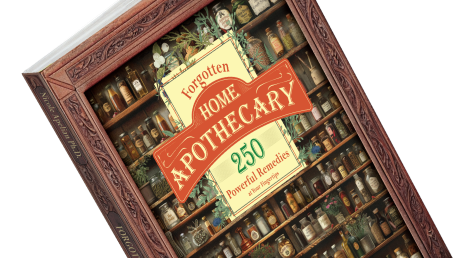






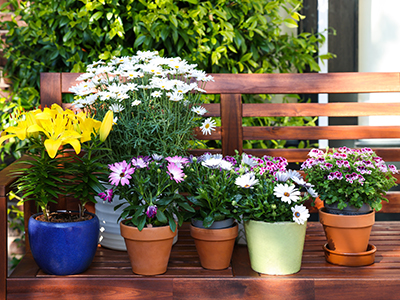 For an outdoor garden, take the following steps:
For an outdoor garden, take the following steps: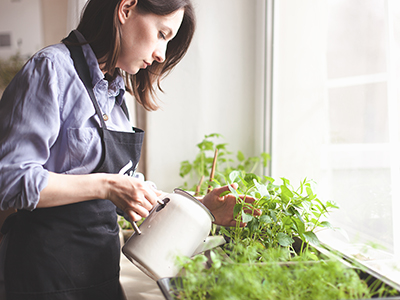
 Chamomile
Chamomile Calendula
Calendula Echinacea
Echinacea